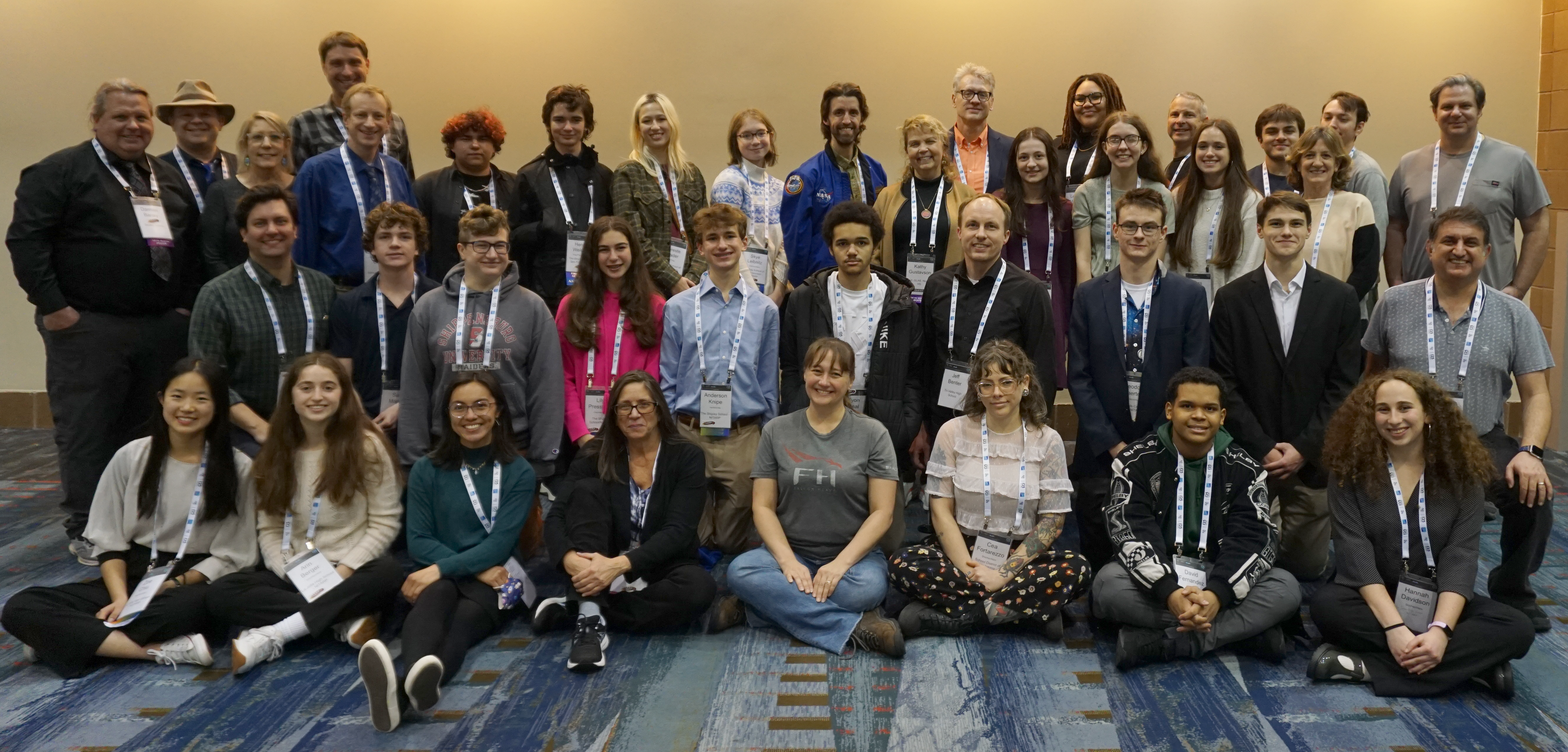
High School Teachers and Students Continue Doing Real Astronomy Research

It’s time! At the winter meeting of the American Astronomical Society (AAS), running from January 7 through January 11 in New Orleans, LA, 18 astronomy educators and 21 of their students from the NASA/IPAC Teacher Archive Research Program (NITARP) are attending.
For over a decade, NITARP has partnered small groups of educators with a research astronomer for original, year-long, authentic research projects. At the AAS meeting, the educators from the 2023 class, along with some of their students, are presenting the results of their work over the past year. Meanwhile, the educators from the 2024 class are meeting their teams and getting started on their own projects.
From NITARP’s early years through the 2024 class, a total of 145 educators from 42 states have participated or will participate; the 2023 class has our first participants from South Dakota, West Virginia, and Maryland. NITARP works with educators because, through them, NITARP reaches thousands of students per year with information about how science really works, what NASA does, and the wealth of astronomy data that is freely available to the public.
Teams presenting their work at the January 2023 AAS meeting
2023 team working with Dr. Varoujan Gorjian (JPL/IPAC):
- David Friedlander-Holm (The Bay School of San Francisco, San Francisco, CA) – mentor teacher for the team
- Donald Carpenetti (Craven Community College, New Bern, NC)
- Spencer Cody (Edmunds Central School District, Roscoe, SD)
- Justin Hickey (Episcopal High School, Bellaire, TX)
- Cea Fortarezzo (Strawberry Mansion High School, Philadelphia, PA)
This team worked with Gaia and Wide Field Infrared Survey Explorer (WISE) data to study galaxies. The space-based Gaia survey telescope has a database of 1.2 billion sources that have been monitored for years to detect their motion on the sky induced by the orbit of the Earth around the Sun. This apparent motion is called parallax. Close objects should show greater parallax than further objects. But a small number of very far galaxies have unexpectedly shown significant parallax values in the Gaia data. This NITARP team tried to see how pervasive these unexpected parallaxes were in the Gaia data. They used a catalog of over 4 million far away galaxies identified by the space-based NASA WISE telescope, and matched them to the Gaia catalog. Because those galaxies are so far away, they should not have a parallax value in the Gaia catalog. But the team discovered over 400 sources that showed this unexpected parallax and tried to pin down whether these parallax values are reliable or the result of nearby sources that may be confusing the Gaia measurements.
2023 team working with Dr. Luisa Rebull (Caltech/IPAC):
- Olivia Kuper (North Greene High School, Greeneville, TN) – mentor teacher for the team
- Damian Baraty (Severn School, Severna Park, MD)
- Rosina Garcia (San Diego Unified School District, La Jolla, CA)
- Debbie McKay (HSTA at Wheeling Park High School, Wheeling, WV)
- Ace Schwarz (The Shipley School, Bryn Mawr, PA)
This team worked with data from 10 different telescopes to look for young stars. They started from a catalog that was originally assembled from photographic data by Stuart Sharpless in 1959; that catalog was originally meant to list star forming regions, and indeed, many are now known to be famous stellar nurseries. But many have been heretofore ignored. This team picked several of these ignored targets which they wanted to explore further, using multi-wavelength archival data to look for young stellar object candidates. They surprised themselves with what they found! The region that they thought would turn out to have the most young stars turned out instead to have very few. Some of the regions that they didn’t think would have many young stars instead turned out to have many young star candidates.
All of their posters are available on the NITARP website - https://nitarp.ipac.caltech.edu/event/62-AAS-2024.
The 2023 educators will now go on to conduct at least 12 hours of professional development for their colleagues in their schools and communities, at the local, regional, and national levels, online and in-person.
NITARP is announcing today the 2024 class of educators and their teams
2024 team working with Dr. Luisa Rebull (Caltech/IPAC):
- Jeff Benter, educator mentor, Tri-Valley High School, Downs, IL
- April Andreas, McLennan Community College, Waco, TX
- David Dahari, Wahconah Regional High School, Dalton, MA
- Joseph Perry, Palmyra Macedon High School, Palmyra, NY
2024 team working with Dr. Varoujan Gorjian (JPL/IPAC):
- Ben Senson, educator mentor, Madison Metropolitan School District Planetarium and Madison College, Madison, WI
- David Forester, Mission Vista High School, Oceanside, CA
- Lenee Mason, Copiague Middle School, Copiague, NY
- Michelle Riordan, Police Activities League of Egg Harbor Township & Atlantic County, Egg Harbor Township, NJ
They are meeting each other for the first time at this AAS meeting in New Orleans, and are learning about their projects. They plan to present their results, with their students, at the 2025 AAS winter meeting to be held in National Harbor, MD.
IPAC, based at Caltech, in Pasadena, CA, is leading this program. These teams use archival data from the NASA/IPAC Infrared Science Archive (IRSA), the NASA/IPAC Extragalactic Database (NED), and the NASA Exoplanet Archive, all of which are based at IPAC, and other NASA archive holdings. Funding comes from the NASA Astrophysics Data Program.
More information NITARP can be found at https://nitarp.ipac.caltech.edu/.
Media Contacts:
Luisa Rebull
California Institute of Technology / IPAC
(818) 679-6496
rebull@ipac.caltech.edu
Gordon K. Squires
California Institute of Technology / IPAC
(626) 395-3121
squires@ipac.caltech.edu
- Date: January 10th, 2024
- Category: Project News
- View Image


